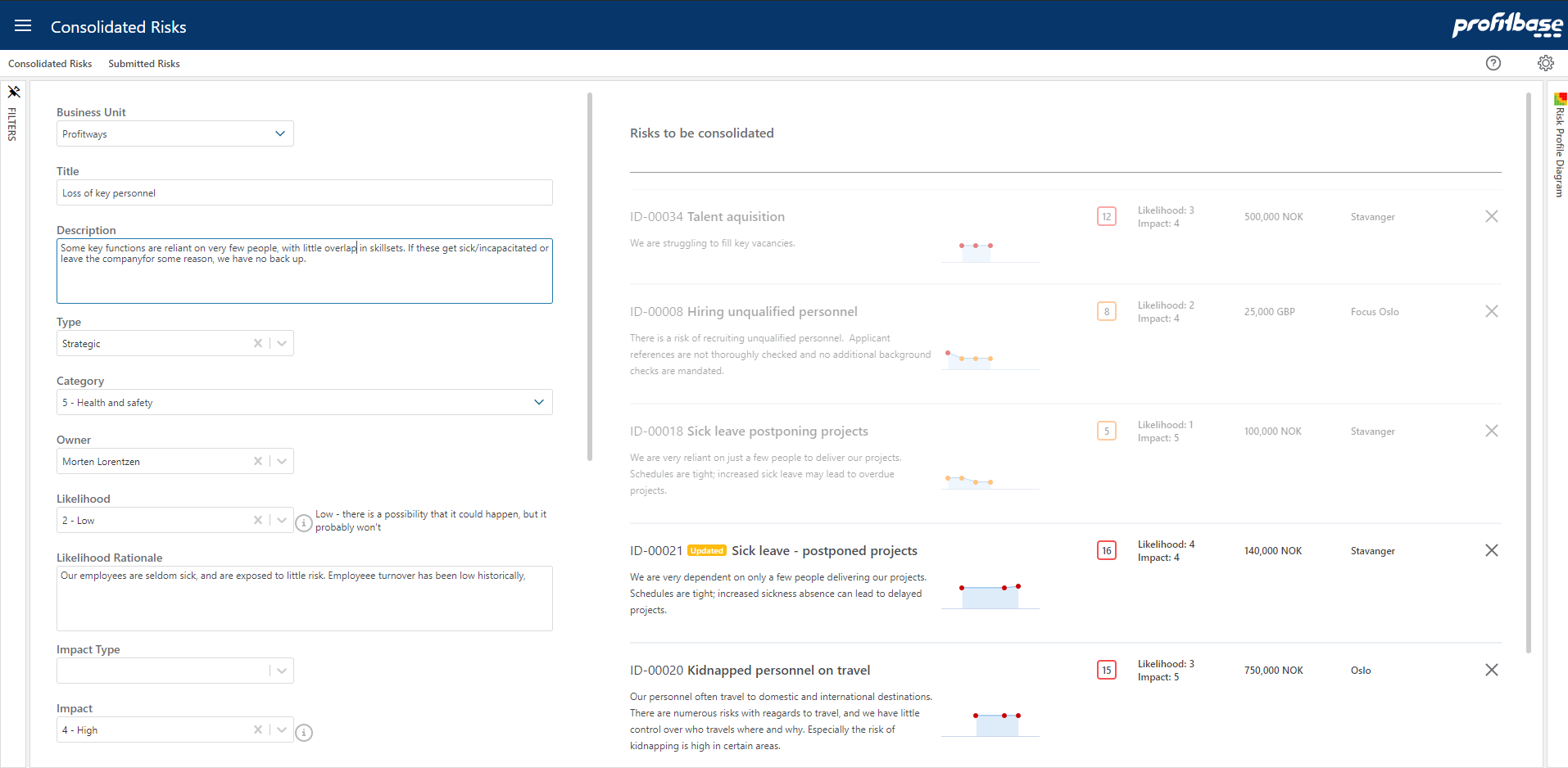Group risks
Overview
This is the workbook for consolidating risks at a group/company level. To consolidate in this context it is to combine two or more risks into a single unit. Risk consolidation means that you take into account the interaction and interdependencies between individual risks to see the bigger picture.
Submitted risks
On this page, you will see risks submitted from various departments across the organization. If you find risks that have common themes, you can group them together and evaluate how they interact and affect risk towards the company/group.
An example: Various departments have sent risks regarding personnel not coming to work due to sickness, strikes, etc. As a group risk manager, you can group and evaluate all these risks under a shared, consolidated group risk. It is possible to add the risks to an existing group risk, create a new group risk or sending the risk back to the risk owner.

Once you have selected the relevant risks and added them to an existing risk/created a new group risk, you are then asked to evaluate the risks jointly through a risk input form. The right part of the screen shows you and overview of the risks you have selected for consolidation. The left part of the screen is a risk form where you evaluate the risks. In the example below, numerous departments have entered risks related to loss of key personnel. This can pose a threat to the organization as a whole. For more on risk evaluation, please see Risk form.

Consolidated risk
On this page, you will see how individual risks have been consolidated into group risks. You can then add treatment plans for how to handle the consolidated risk. For more on treatment plans, please see Add Treatment Plan.
By pressing Add New Risk, you will be able to create a group risk from scratch. You can then add risks that have been submitted from lower levels in the organizational hierarchy.